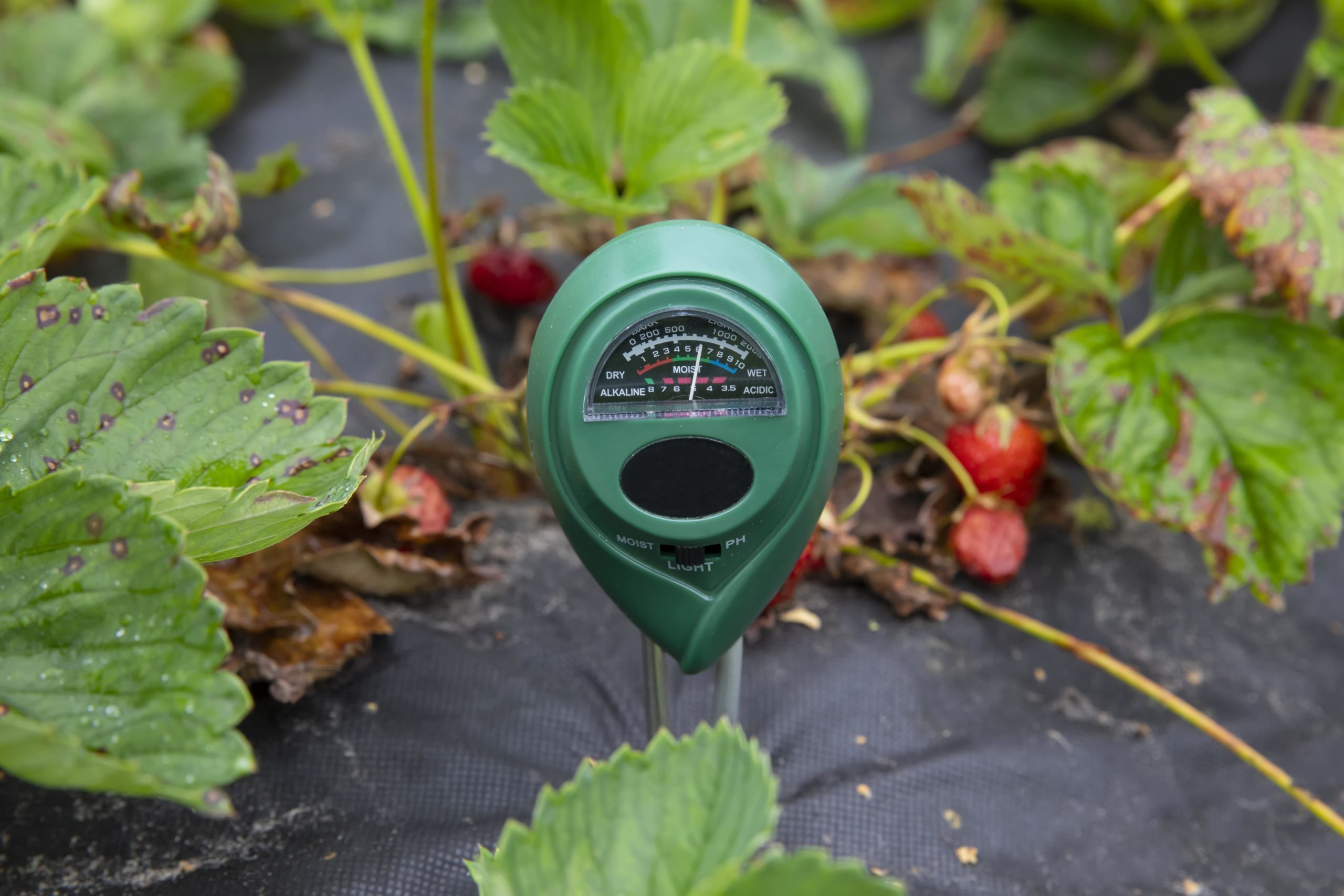
As a veteran cannabis cultivator, you are aware of the significance of sustaining suitable pH levels in your nutrient solution. In this blog post, we will explore the nuances of adjusting pH levels to ensure your plants receive all essential nutrients for healthy growth. We’ll cover everything from understanding the pH scale and its range to identifying signs of low or high pH in your water quality. You’ll learn how to use litmus paper and other tools to measure pH levels accurately and adjust them with precision using various methods such as adding small amounts of acid or base solutions. By the end of this post, you’ll have a solid grasp on achieving that sweet spot for neutral pH and ensuring maximum nutrient availability for your hydroponic garden’s success!
Table of Contents:
- Understanding pH Levels in Cannabis Growing
- Measuring pH Levels in Soil
- Adjusting pH Levels with Nutrients
- Benefits of Lowering Soil pH Levels
- Troubleshooting Low Soil pH Problems
- FAQs in Relation to Ph Down
- Conclusion
Understanding pH Levels in Cannabis Growing
Cannabis plants need the right pH balance to grow and thrive. Knowing how to measure and adjust pH levels is an important part of successful cannabis growing. Comprehending the rudiments of pH in cannabis cultivation can assist cultivators to reap the greatest yield from their plants.
Measuring pH Levels in Soil:
Measuring soil’s pH level is essential for ensuring that your plants have enough nutrients to grow properly. There are several ways to measure soil’s acidity or alkalinity, including using a test kit, litmus paper strips, or a digital meter. When testing with any method, make sure you take multiple readings from different areas of your garden bed so you can get an accurate picture of what’s going on in your soil.
Adjusting pH Levels with Nutrients:
If you find that your soil’s pH level isn’t within optimal range for cannabis growth (6-7), then it may be necessary to add nutrients such as sulfur or lime powder to lower or raise its acidity/alkalinity respectively. Adding too much nutrient at once can cause “nutrient burn” which will damage your plants so it’s best practice to start small and gradually increase until desired results are achieved over time.
Lowering the soil’s pH level creates an optimal environment for nutrient uptake, as they become more readily available to the cannabis plants. Additionally, it boosts microbial activity which helps break down organic matter into usable forms such as nitrogen and phosphorus – two key elements needed by cannabis during its various growth stages. Furthermore, this process reduces weed competition since many weeds cannot thrive in acidic environments due to their shallow root systems being unable to survive without proper nutrition supplementation from other sources (fertilizers).
Understanding pH levels in cannabis growing is a critical component of successful cultivation, as it affects the absorption of nutrients and overall health of your plants. Measuring pH levels in soil can be an intimidating task for even experienced growers; however, with some knowledge and practice you will become proficient at ensuring optimal conditions for your plants.
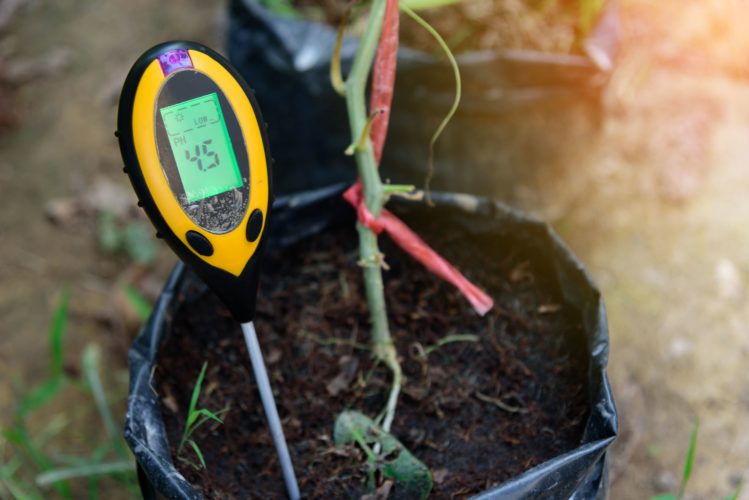
Measuring pH Levels in Soil
Measuring soil pH levels is a crucial step in cannabis growing. Accurately monitoring and adjusting the pH level of your soil can help ensure healthy, vigorous plants that produce high-quality buds. Soil pH meters are the most reliable way to measure and monitor your soil’s acidity or alkalinity.
When using a meter, it’s important to understand what kind of readings you should be getting from your soil. The ideal range for cannabis is between 6 and 7 on the pH scale. Anything below 6 will create an acidic environment, while anything above 7 will cause an alkaline one – both can lead to nutrient deficiencies in your plants if left unchecked.
To correctly employ a meter, ensure you embed it in the upper layer of dampened earth at least two inches down – this will give an exact indication of how much acidity or alkalinity is contained in that precise area within the cultivation bed or compost. You may need to take multiple readings throughout different parts of your grow space as well; this will help you get an overall idea of where things stand with regards to pH levels across the entire area.
Some soils, such as peat moss and vermiculite, have differing natural pH levels which may require more frequent adjustments when it comes to adjusting nutrient concentrations during feeding cycles. This means that even if all other factors remain constant, certain types of soils may require more frequent adjustments than others when it comes time to adjust nutrient concentrations accordingly during feeding cycles.
Finally, remember that organic matter like composted leaves and manure can drastically affect your soil’s pH level over time – so don’t forget to factor these components in when measuring. If used properly they can be great sources for adding essential nutrients but too much organic material can quickly push a neutral reading up into either extreme end (acidic/alkaline), which could spell disaster for any unsuspecting growers who don’t keep tabs on their numbers regularly.
Testing the pH of earth is a critical action for cannabis cultivators to guarantee their vegetation acquire proper nourishment. To maintain a healthy and productive crop, it’s necessary to adjust these levels with appropriate nutrient additions; this article will discuss how best to do so.
Adjusting pH Levels with Nutrients
To effectively adjust the pH levels of cannabis soil, nutrients and other additives should be used. These additives can help lower or raise the acidity of your soil, depending on what you need. The key is understanding which nutrients will work best for your particular strain of cannabis and its needs.
First off, you’ll want to determine what type of nutrient solution works best for your strain. Some strains require higher concentrations of nitrogen while others may need more phosphorus or potassium. Once you know what kind of nutrient solution works best for your plants, then you can begin adjusting the pH level with it.
To adjust the pH level of a nutrient solution, an acidic fertilizer such as sulfuric acid or ammonium sulfate can be added. This type of fertilizer helps reduce alkalinity in the soil and bring down its overall pH level so that it’s better suited for growing cannabis plants. It’s important not to add too much acidic fertilizer though because if done incorrectly, it could burn up delicate roots and stunt growth in young seedlings or clones.
Another option is adding a base such as calcium carbonate or lime powder which will increase alkalinity and raise the overall pH level in soils that are too low (acidic). Adding these types of bases should be done carefully since they can cause serious damage if added too quickly or without proper dilution first.
For those looking for a more natural approach when adjusting their soil’s pH levels, there are several options available including organic matter like compost tea, seaweed extract, and fish emulsion. Rather than relying on chemical fertilizers like sulfuric acid, these organic solutions can help to gradually restore the pH balance of soils by introducing beneficial micronutrients. Additionally, these natural solutions also provide additional benefits such as improved water retention capacity and increased microbial activity within soils which all contribute towards healthier plant growth over time.
By manipulating the soil pH with nutrient supplements, you can make sure your cannabis plants get all the essential vitamins and minerals they need to thrive. By lowering soil pH levels, you will be able to reap even more benefits for healthier and bigger yields.
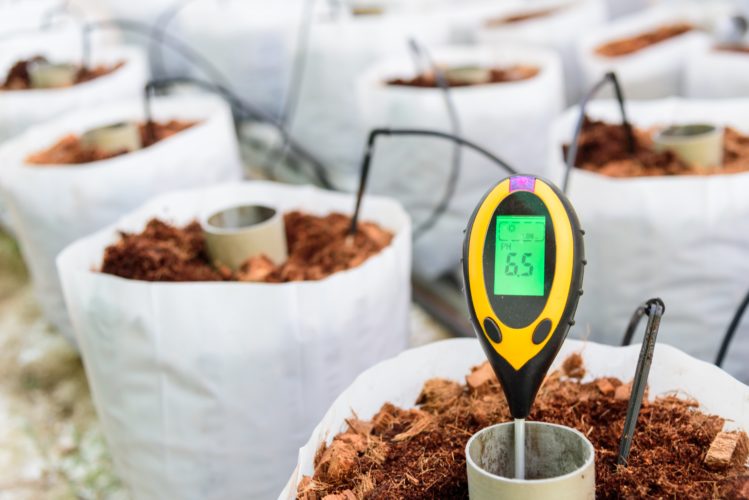
Benefits of Lowering Soil pH Levels
Lowering the pH level of soil is an important part of cannabis growing. It can help to improve nutrient uptake, reduce stress on plants, and even increase yield. The benefits of lowering soil pH levels for cannabis growth are numerous, but it’s important to understand how to measure and adjust these levels correctly in order to get the most out of your crop.
Measuring pH Levels:
To accurately measure the pH level in your soil you will need a digital or litmus paper test kit. These kits usually come with instructions on how to take readings and what range you should be aiming for when adjusting your soil’s pH levels. Generally speaking, 6-7 is considered optimal for cannabis growth so if your readings fall outside this range then adjustments may be necessary.
Adjusting Nutrients:
Once you have taken a reading from your soil test kit you can begin adjusting the nutrients accordingly. Adding lime or sulfur (depending on whether you want to raise or lower the pH) can help bring it back into balance quickly and easily without having any negative effects on plant health or development.
Lowering the acidity of the soil has a plethora of advantages for cannabis growers, from increased nutrient uptake by plants and improved resistance to disease and pests due to healthier root systems with greater oxygen absorption capabilities, to reduced stress caused by temperature fluctuations which can otherwise damage delicate foliage. Moreover, decreased acidity encourages beneficial microorganisms like mycorrhizal fungi that further promote better overall plant health while increasing yields through higher photosynthesis rates.
If after making adjustments with lime or sulfur there are still issues with low soil pH then other steps may need to be taken such as adding organic matter like composted manure which helps buffer acidic soils naturally while providing additional nutrition at the same time too. Alternatively, aerating clay soils before planting could also help improve drainage rates so that excess water doesn’t become trapped, ultimately leading to decreased acidification rates within them. Either way though – both options should provide satisfactory results when dealing with low soil pH problems eventually regardless.
Decreasing the pH of the earth can be advantageous for improving plant nutrient uptake and vigor, ultimately resulting in better yields. However, if done incorrectly it could lead to problems such as nutrient deficiencies or even root rot. Therefore, troubleshooting low soil pH issues is essential for successful cannabis cultivation.
Troubleshooting Low Soil pH Problems
Low soil pH levels can be a major problem for cannabis growers. When the soil pH drops below 6, plants may not absorb enough nutrients to thrive and produce high-quality buds. To resolve pH issues, it’s essential to comprehend the underlying causes and how to modify nutrient levels in your grow medium.
The most common cause of low soil pH is overfertilization with synthetic fertilizers that contain salts or acids. These chemicals can lower the natural acidity of the soil, resulting in poor nutrient uptake by your plants. Adhere to the manufacturer’s guidelines when using chemical fertilizers and only use as much as suggested for the best results.
Another potential issue is water quality. Hard water contains higher concentrations of calcium carbonate which can raise the alkalinity of your growing medium and decrease its acidity level over time if left unchecked. Consider investing in a reverse osmosis filter system or testing kits so you know exactly what type of water you’re using on your plants each time they need watering or feeding with fertilizer solutions.
If too much organic matter has been incorporated into the growing medium without first ensuring adequate aeration and drainage capabilities, anaerobic conditions can arise wherein oxygen levels become drastically diminished. This may cause fungal diseases such as root rot to take hold, significantly diminishing plant health and consequently their ability to absorb essential nutrients for optimal growth during flowering.
A lack of nitrogen in the soil could be responsible for a low pH, which can be addressed by incorporating extra sources of this element via composting. However, one must take care to not over-apply these supplements as too much nitrogen may lead back to acidic soils. Therefore, it is essential to apply just enough for optimal results and keep a close eye on your plants’ progress.
Fortunately, addressing these issues can be achieved by making adjustments to fertilizer ratios, switching out hard water for filtered water, implementing aerating and drainage solutions, incorporating additional organic material or increasing nitrogen availability via composting techniques. You can adjust fertilizer ratios, change out hard water for filtered water, implement aerating and drainage solutions, incorporate additional organic material, or increase nitrogen availability via composting techniques. It is essential to know exactly why a certain set point was reached before attempting any kind of corrective action; otherwise more harm than good may be done instead.
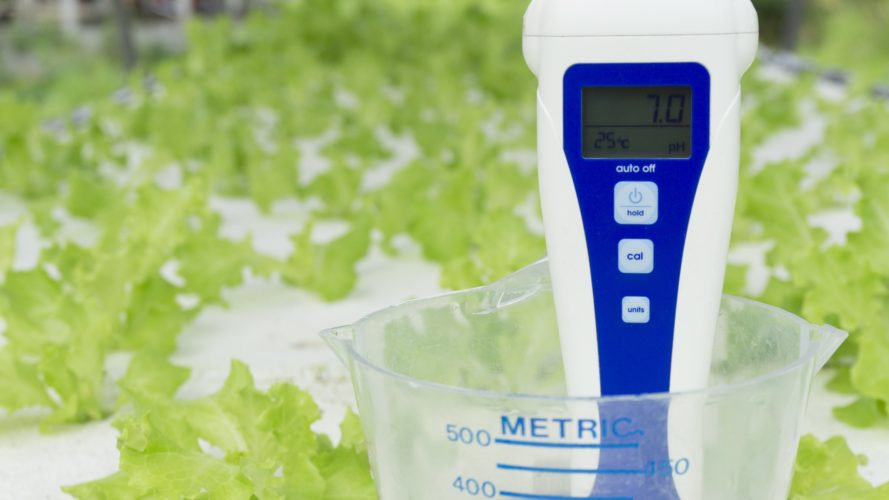
FAQs in Relation to Ph Down
What does pH down do?
PH down, also known as acidifier, is a chemical additive used to lower the pH of soil or water. It works by releasing hydrogen ions into the environment, which helps reduce alkalinity and make it more acidic. This can be beneficial for cannabis growers since many strains prefer slightly acidic soils with a pH between 6-7. Additionally, PH down can help create optimal nutrient absorption rates in your plants’ roots so they get all the necessary minerals and vitamins they need to thrive.
How much pH down do I use per gallon?
The amount of pH down you should use per gallon depends on the specific nutrient solution being used. Generally, it is recommended to start with 1/4 teaspoon for every gallon and adjust as needed depending on your results. To ensure accurate readings, always test your water before adding any nutrients or pH down. If the pH is not at desired levels, gradually add small amounts of pH down to bring it into range. Monitor regularly and make sure not to exceed manufacturer’s recommendations when using additives such as pH Down in order to avoid over-fertilizing plants which can cause serious damage or death if left unchecked.
Can you add too much pH down?
Yes, it is possible to add too much pH down. Too much of this chemical can cause nutrient lockout in the soil and create an environment that is not suitable for plant growth. Overdosing with pH down can also damage roots, making them more vulnerable to disease and pests. It’s important to always use the recommended amount when adjusting your soil’s pH level as adding too much could have detrimental effects on your cannabis plants’ health and yield.
What is the strongest pH down?
The strongest pH down available for cannabis growers and smokers is phosphoric acid. Phosphoric acid, a colorless and odorless liquid, can be used to decrease the pH level of water or soil in order to create an ideal growing environment for cannabis plants. When handled properly, it can reduce pH levels quickly and safely without harming the plants or their roots. When handling phosphoric acid, it is essential to wear protective gear such as gloves in order to avoid skin irritation.
Conclusion
In conclusion, adjusting the pH levels of soil for cannabis growing is a critical step in ensuring optimal growth and yields. By understanding how to measure pH levels and using nutrients to lower them if necessary, growers can ensure that their plants are receiving the best possible environment for healthy development. When done correctly, lowering soil pH with “ph down” solutions will result in increased nutrient availability and improved plant health overall.
Grow your weed like a pro with GreenBudGuru.com! Our comprehensive tutorials and resources provide you with the knowledge needed to maximize yield, quality, and potency of your harvest.
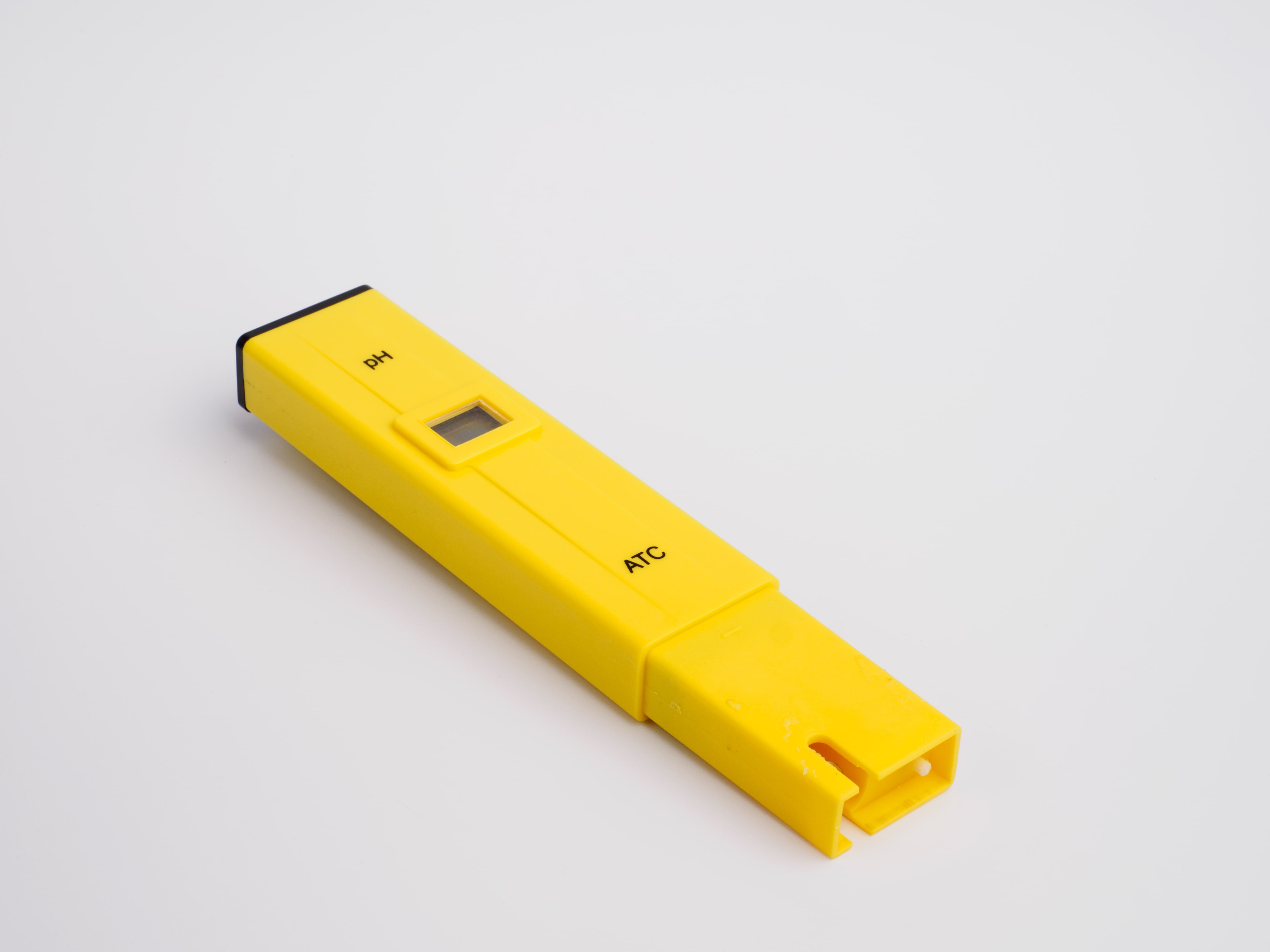
Originally posted 2023-03-28 16:14:21.


 James Alexander
James Alexander